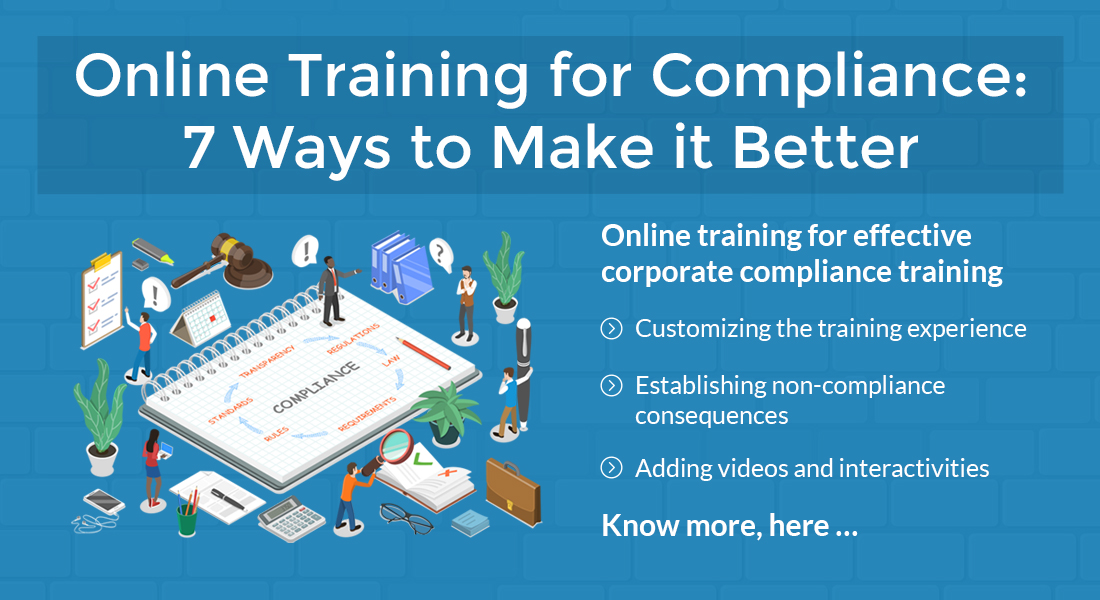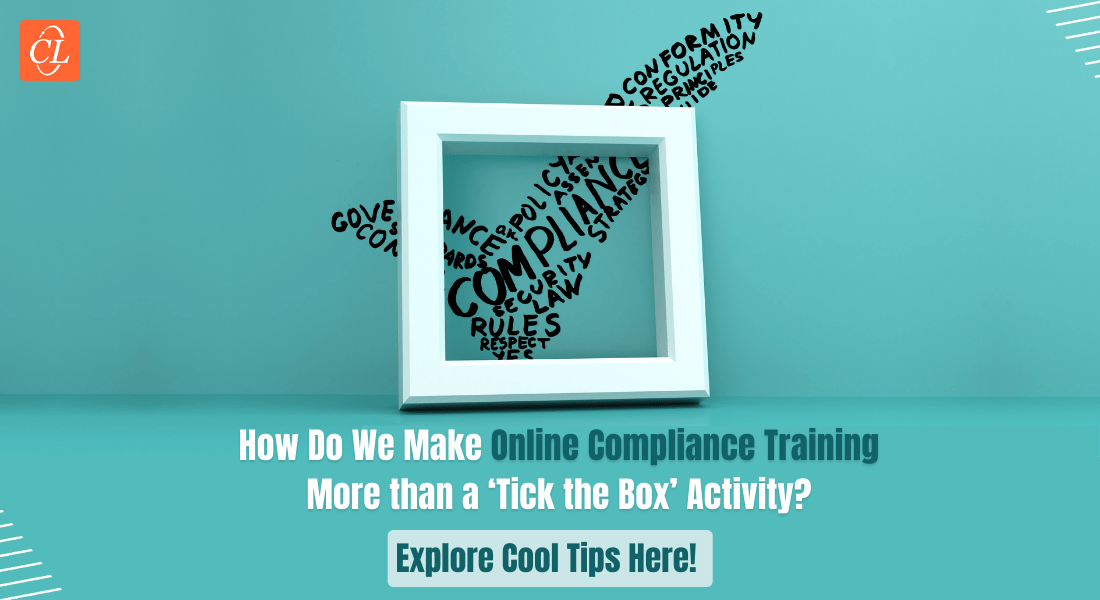10 Commandments to Make Online Compliance Training Engaging

L et’s admit it, ‘interesting’ and ‘exciting’ will not be the first words that come to employees’ minds when they think of online compliance training – so infamous they are for being boring and dry. When training becomes uninteresting, employees will not pay heed to most of the information being presented – they will simply click through the boring screens or take a nap during the countless videos featuring dry scripts. But, since it is mandatory for organizations to deliver compliance training, they cannot afford such a reaction toward it. Here are 10 commandments that will change the perception of your employees toward compliance training and make online compliance training engaging.
→ Download eBook: Classroom to eLearning Conversion - Everything You Always Wanted to Know
1. Learn about your audience
The first thing you need to do before you begin developing your online compliance training development is know exactly who your audience is. Analyze their educational and professional background, prior knowledge of different compliance guidelines, experience in the industry, and familiarity with technology. You can gather this information by conducting surveys, interviews, group discussions, or through observation. Getting a clear picture of these factors is more than important because without that, you will not be able to determine if your instructional methods and tools are appropriate for your learners.
2. Exclude the already known
Every organization has both experienced and new employees. One size doesn’t fit all. You cannot deliver the same compliance training program to both experienced and new employees as the experienced ones will be familiar with most of the guidelines. Instead, mark the modules or topics that are mandatory for experienced employees (such as updates in regulations) so that they take only that particular part of the course and the new hires take the complete course.
3. Do not force learners
Adults have a deep need to be self-directing. So do not force them in the navigation of the course or in the order in which the courses have to be accessed. Let them decide which topic they want to access first. As mentioned earlier, a few learners will be experienced and have knowledge about certain topics; they might want to skip the modules covering those topics. In such cases, you can test them on those particular topics and allow them to skip if they pass the tests. If they don’t pass the quiz in any topic, you can suggest they take the course on that particular topic.
4. Include interactive elements
Lack of interactivity is one of the reasons compliance training programs are boring. So, instead of just developing text heavy courses, include interactive elements such as games, decision-making scenarios, or quizzes. Nothing in the world can be as demotivating for a learner as sitting through a long compliance training program, doing nothing.
5. Tell them stories
We usually retain more information when it is conveyed to us in the form of a story. So, instead of dumping the rules and regulations, frame a story to explain the application of these rules and regulations. Framing such stories allows employees relate the lesson to the real world. While creating such stories, don’t always talk about the negative consequences; stay positive by sharing real-life stories of how companies saved themselves by abiding by these rules. Also, add a touch of humor to these stories by integrating real world examples that feature humorous elements.
6. Consider the visual aspect
Won’t you agree when I say compliance topics are less than exciting? What can be more boring than looking at slide after slide full of text about a less than exciting topic? Instead of simply dumping loads and loads of content, consider presenting the information in a visually attractive manner. Many are good at learning through visuals; they retain more when information is presented in the form of an infographic or a video.

Classroom to eLearning Conversion
Everything You Always Wanted to Know
- Converting classroom material to eLearning
- Leveraging authoring tools for conversion
- Understanding different avatars of eLearning
- And More!
7. Break the course into digestible modules
Compliance training programs usually have a lot of content. Having all the content in a single course will make the online training experience lengthy and less pleasant for learners. So, break it down into digestible modules to avoid cognitive overload on the learners and make the training experience more easy. These bite-sized modules must not be more than 10 minutes so that learners can complete them on the go, anywhere, and on any device convenient for them.
8. Use different training methods
Combine different training methods to provide learners a blended learning experience. Remember that a successful compliance training program involves three important phases – helping learners understand the importance of being compliant, ensuring the program engages learners effectively, and enabling them apply the learning. To blend training methods, have instructor-led training and m-learning formats to help learners understand the importance of being compliant, e-learning and online job-aids to make compliance training interesting, and m-learning and classroom sessions to help transfer the learning to work.
9. Engage in two-way discussions
Learners cannot interact with peers or instructors in e-learning. So while in the classroom, have two-way discussions with them. Provide examples and case studies and allow them to talk about their personal experiences of compliance breaches. The discussions can be further improved by relating workplace scenarios to non-work scenarios, such as sports and/or hobbies that your workers participate in.
10. Gamify the quiz
Who wouldn’t like to play a game or navigate through a real-life simulation instead of just clicking through text-heavy slides? So, instead of providing simple multiple choice questions in the quiz, create real-life simulations games where employees can navigate through a virtual environment and complete the given tasks which mimic real-life situations. You can also give scores for successfully completing each task. Having a leaderboard on the Learning Management System (LMS) and rewarding the top scorers will motivate the learners for active participation.
These are the 10 commandments of making online compliance training engaging. But when you consider these commandments, you need to make sure you have a rapid authoring tool that is capable of developing eLearning courses that adhere to these commandments.




![Creating Online Compliance Training: Tips & Best Practices [Infographics]](https://blog.commlabindia.com/hubfs/Imported_Blog_Media/tips-for-impactful-compliance-communication1.jpg)
